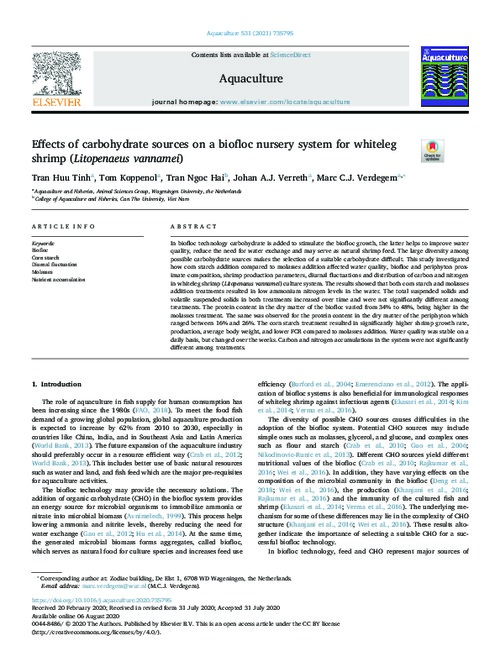Effects of carbohydrate sources on a biofloc nursery system for whiteleg shrimp (Litopenaeus vannamei)

In biofloc technology carbohydrate is added to stimulate the biofloc growth, the latter helps to improve water quality, reduce the need for water exchange and may serve as natural shrimp feed. The large diversity among possible carbohydrate sources makes the selection of a suitable carbohydrate difficult. This study investigated how corn starch addition compared to molasses addition affected water quality, biofloc and periphyton proximate composition, shrimp production parameters, diurnal fluctuations and distribution of carbon and nitrogen in whiteleg shrimp (Litopenaeus vannamei) culture system. The results showed that both corn starch and molasses addition treatments resulted in low ammonium nitrogen levels in the water. The total suspended solids and volatile suspended solids in both treatments increased over time and were not significantly different among treatments. The protein content in the dry matter of the biofloc varied from 34% to 48%, being higher in the molasses treatment. The same was observed for the protein content in the dry matter of the periphyton which ranged between 16% and 26%. The corn starch treatment resulted in significantly higher shrimp growth rate, production, average body weight, and lower FCR compared to molasses addition. Water quality was stable on a daily basis, but changed over the weeks. Carbon and nitrogen accumulations in the system were not significantly different among treatments.
Permalink
Date Available
Type
Publisher
Countries
ISSN
0044-8486
Copyright
CC-BY-4.0
Research Themes
Language